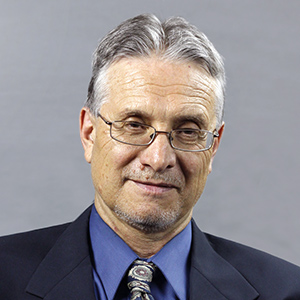“An estimated $350 million in undisclosed royalties were paid to the National Institutes of Health (NIH) and hundreds of its scientists,” the Epoch Times reports, “including the agency’s recently departed director, Dr. Francis Collins, and Dr. Anthony Fauci, according to a nonprofit government watchdog.” That watchdog is Open the Books, headed by Adam Andrzejewski.
From 2010 to 2020, Andrzejewski told reporters, “Francis Collins, the immediate past director of NIH, received 14 payments. Dr. Anthony Fauci received 23 payments and his deputy, Clifford Lane, received eight payments.” Trouble is, the NIH heavily redacted the information.
“These are not the files the AP received in 2005 where everything was disclosed,” Andrzejewski told reporters, “the scientist’s name, the name of the third-party payer, the amount of the royalty paid by the payer to the scientist.”
According to a 2005 report by the British Medical Journal, patients who took part in NIH drug trials were not told that NIH scientists receive royalties from pharmaceutical companies and device makers. Had they known about that potential conflict of interest, patients might have reconsidered the risks of the trial.
At the time, the NIH held 1200 pages related to Fauci’s financial information and conflict of interest payments with no plans to put that information on its website. One of the few journalists to follow up was John Solomon, then with CBS News, in “Profit Motive Hidden From Patients.”
Fauci and Lane were “collecting royalties on an AIDS treatment they’re testing on patients using taxpayer money. But patients weren’t told on their consent forms about the financial connection.” As Solomon learned, “more than 900 current and former scientists at the National Institutes of Health legally collected $8.9 million in such royalties last year for drugs and inventions they discovered while working for the government.”
Fauci and Lane acknowledged that they were “unwilling to tell interleukin-2 patients about the royalties on consent forms” until the NIH developed a disclosure policy. As Solomon noted, their case “illustrates the gulf between what the government promised nearly five years ago in the midst of controversy and what actually has been done.” As recent redactions reveal, the payments are bigger and the disclosure gulf much wider.
As Andrzejewski explains, the NIH doles out $32 billion in grants to some 56,000 grantees and over 11 years, approximately $350 million is “flowing back to NIH scientists and leadership.” With the NIH blocking requests for information, the payments are receiving no scrutiny, “on its face a conflict of interest.” Taxpayers and unwitting participants in medical trials might dial back to Fauci’s first “treatment” for AIDS.
Fauci promoted trials of AZT (azidothymidine), marketed as Zidovudine, a DNA chain terminator rejected for cancer treatment because of cytotoxicity—lethality to cells. In 1987 the FDA approved AZT at lightning speed, which disturbed molecular biologist Dr. Harvey Bialy, at the time scientific editor of Biotechnology.
“I can’t see how this drug could be doing anything other than making people very sick,” said Bialy, but at the time AZT was making some people very rich. After FDA approval, Burroughs Wellcome stock went through the roof. At $8,000 per year, per patient, AZT was the most expensive drug ever marketed. As the BBC showed in “Guinea Pig Kids,” Fauci also conducted trials of AZT and other dangerous drugs on black and Hispanic foster children in New York City.
In her 1995 book, The Search for an AIDS Vaccine, Fauci’s wife Christine Grady said children and pregnant women were suitable subjects for drug trials and touted “the availability and effectiveness of AZT.” As the couple had to know, it was anything but.
In 2012, the NIH named Christine Grady, a specialist in recruitment of human subjects and chief of the NIH bioethics department. The NIH announcement did not disclose that Grady is Fauci’s wife, and Grady hasn’t disclosed whether any of the human subjects would have held back from drug trials if they knew her husband got a piece of the action.
The NIH inspector general explored that theme in a 2019 report titled “NIH Has Made Strides in Reviewing Financial Conflicts of Interest in Extramural Research, But Could Do More.” As Adam Andrzejewski has discovered, the NIH is now doing less.
NIAID boss Fauci, 81, now claims “I represent science.” Outgoing NIH director Francis Collins who also lied about funding gain-of-function research, deployed Fauci for a “quick decisive takedown” of the scientists of the Great Barrington Declaration, respected epidemiologists from Stanford, Harvard, and Oxford universities.
Fauci also fired Dr. Jonathan Fishbein for exposing Fauci’s dangerous drug experiments. Fishbein told Robert F. Kennedy Jr., author of The Real Anthony Fauci, that the NIAID boss is “like the Godfather” and “organized crime.” In similar style, the NIH, particularly under Collins, comes across as a crime family enforcing omertà, the mafia code of silence and secrecy.
Of the $350 million in royalties, what are the dollar amounts for Fauci and Collins? Do any of the royalties accrue from the vaccines Fauci wants to make mandatory, even for children under the age of four? The NIH is not responding to Andrzejewski’s FOIA seeking documentation of all payments by outside firms to NIH and/or current and former NIH employees.
According to the Epoch Times report, the nonprofit Judicial Watch is representing Open the Books in federal court. Some judge will decide if the people have a right to know crucial information that should have been made public from the start.
Meanwhile, in testimony on Wednesday, acting NIH director Lawrence Tabak, deputy ethics counselor of NIH since 2010, and in 2009 acting principal deputy director, conceded that the royalty payments presented “an appearance of a conflict of interest.”








